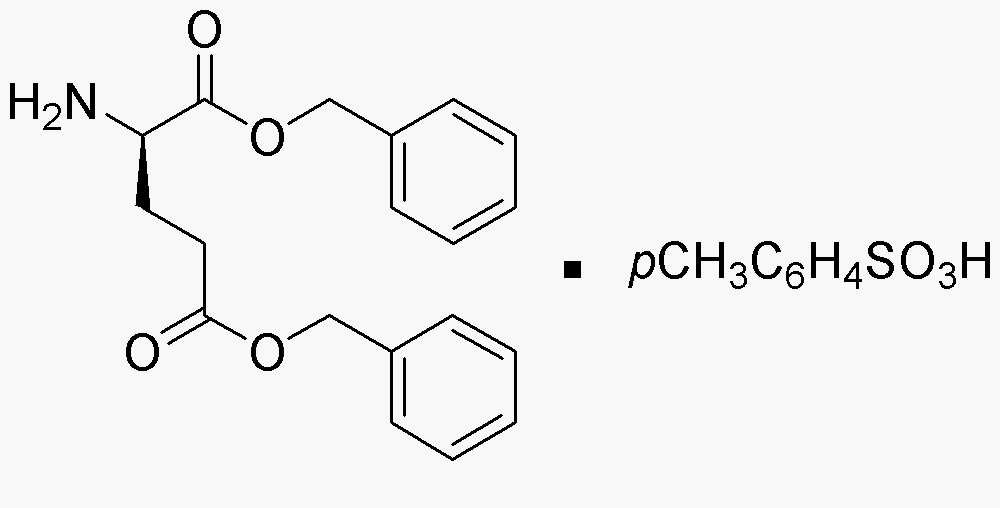D-Glutamic acid dibenzyl ester 4-toluenesulfonate salt is widely utilized in research focused on:
- Pharmaceutical Development: This compound serves as an intermediate in the synthesis of various pharmaceuticals, particularly those targeting neurological disorders, enhancing drug efficacy and specificity.
- Biochemical Research: It is used in studies involving amino acid metabolism, helping researchers understand metabolic pathways and their implications in health and disease.
- Protein Engineering: The compound plays a role in modifying proteins, allowing scientists to explore protein structure-function relationships, which is crucial for developing new therapeutic proteins.
- Analytical Chemistry: It is employed as a standard in chromatography techniques, aiding in the accurate quantification of similar compounds in complex mixtures.
- Material Science: The compound is explored for its potential in creating novel biomaterials, particularly in tissue engineering, due to its biocompatibility and functional properties.
General Information
Properties
Safety and Regulations
Applications
D-Glutamic acid dibenzyl ester 4-toluenesulfonate salt is widely utilized in research focused on:
- Pharmaceutical Development: This compound serves as an intermediate in the synthesis of various pharmaceuticals, particularly those targeting neurological disorders, enhancing drug efficacy and specificity.
- Biochemical Research: It is used in studies involving amino acid metabolism, helping researchers understand metabolic pathways and their implications in health and disease.
- Protein Engineering: The compound plays a role in modifying proteins, allowing scientists to explore protein structure-function relationships, which is crucial for developing new therapeutic proteins.
- Analytical Chemistry: It is employed as a standard in chromatography techniques, aiding in the accurate quantification of similar compounds in complex mixtures.
- Material Science: The compound is explored for its potential in creating novel biomaterials, particularly in tissue engineering, due to its biocompatibility and functional properties.
Documents
Safety Data Sheets (SDS)
The SDS provides comprehensive safety information on handling, storage, and disposal of the product.
Product Specification (PS)
The PS provides a comprehensive breakdown of the product’s properties, including chemical composition, physical state, purity, and storage requirements. It also details acceptable quality ranges and the product's intended applications.
Certificates of Analysis (COA)
Search for Certificates of Analysis (COA) by entering the products Lot Number. Lot and Batch Numbers can be found on a product’s label following the words ‘Lot’ or ‘Batch’.
*Catalog Number
*Lot Number
Certificates Of Origin (COO)
This COO confirms the country where the product was manufactured, and also details the materials and components used in it and whether it is derived from natural, synthetic, or other specific sources. This certificate may be required for customs, trade, and regulatory compliance.
*Catalog Number
*Lot Number
Safety Data Sheets (SDS)
The SDS provides comprehensive safety information on handling, storage, and disposal of the product.
DownloadProduct Specification (PS)
The PS provides a comprehensive breakdown of the product’s properties, including chemical composition, physical state, purity, and storage requirements. It also details acceptable quality ranges and the product's intended applications.
DownloadCertificates of Analysis (COA)
Search for Certificates of Analysis (COA) by entering the products Lot Number. Lot and Batch Numbers can be found on a product’s label following the words ‘Lot’ or ‘Batch’.
*Catalog Number
*Lot Number
Certificates Of Origin (COO)
This COO confirms the country where the product was manufactured, and also details the materials and components used in it and whether it is derived from natural, synthetic, or other specific sources. This certificate may be required for customs, trade, and regulatory compliance.


